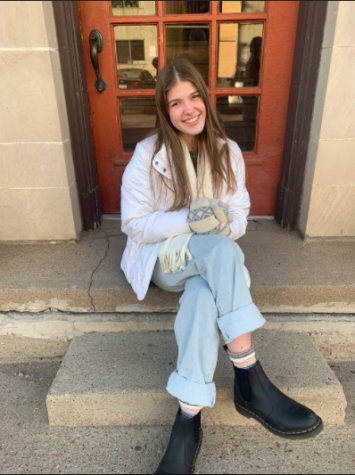Big deals, little savings

A perfect example of a sale trying to get people to buy more. It even clearly says “Buy more, save more.”
February 16, 2022
While everyone’s shopping lists may differ, all of us are affected by the deals around us. Whether it is a sale, buy one get one free or any other type of “saving,” it is important to question whether you actually need the item or if you just want it because it is discounted. If you struggle to abstain from these deals, here are a few steps to stay on task while shopping and refrain from overspending.
First and foremost, always have a list when shopping. From grocery shopping to shopping for clothes or any other item, deals are relentless when it comes to pulling customers in. By making a list before going to a store, you are creating a clear and direct path to the items you need. It will help you stay on task with the reason you went shopping in the first place and stay away from the distractions around you.
Second, create a spending budget before shopping. This will give you a clear visual of the amount you will be able to purchase. This way, if you do see a deal on something that you need or would really enjoy, you will know whether or not you should buy it. If it is inside of your spending budget, then go right ahead and enjoy your discounted item! However, if it is not, that is a great reminder that it may not be something you really need. A budget will steer you away from impulse buying and remind you that even though there is a deal on something, that doesn’t make the item any better. Buying something you do not want just because there was a great deal on it is still unnecessary spending.
Finally, compare items that you may want or need with the items that are on sale. If something you want is more expensive, it is better to save up for that than buy something meaningless just because it costs less. Remember: half off is still more than free for something you do not like very much. If you buy for the deal instead of purchasing something meaningful, you have bought clutter and uselessness.
Something else to consider is that not all deals come with a large “sale” sign on top. Some are more discrete. For example, at Starbucks, a grande vanilla latte is $4.15, while a venti is $4.65. 50 cents does not seem like much, so sizing up can appear to be the better deal for many. However, if you will only drink a grande sized vanilla latte and the rest of the venti is going to waste, then while you may think you are saving money from this “deal” it is actually the opposite. Over time, those extra 50 cents per day will add up and this backwards deal will have taken your money and left you with too much coffee.
These steps do not go to say that deals are all bad. No doubt, a good, money-saving discount is a steal, especially when it is on something that you want and will appreciate having after the deal is over. They are vital in preventing frivolous purchases and for that reason important to understand.








